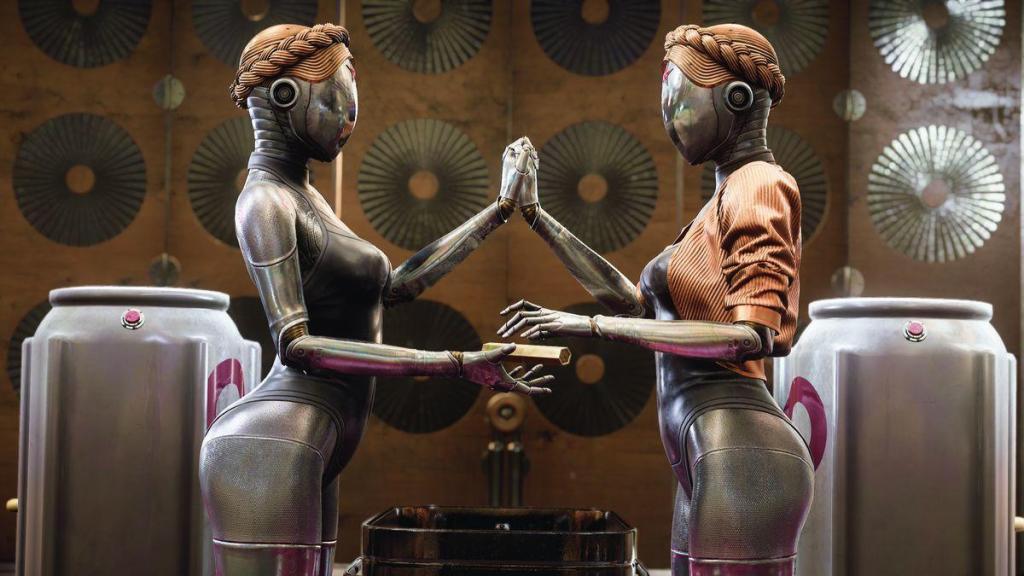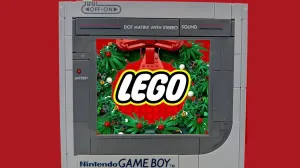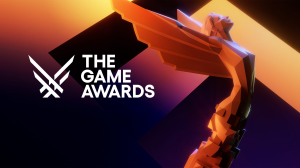Atomic Heart has arrived, and with this first-person shooter throwing wave after wave of killer robots your way, is this apocalyptic story able to make a name for itself in the gaming landscape? Created by the developers at Mundfish, this shooter is populated with lush environments and a variety of enemies as you find yourself in the shoes of a protagonist who is attempting to figure out what is going on in this alternate universe. Ultimately, the game is able to hit a number of heights while at the same time being bogged down by frustrating elements.
Videos by ComicBook.com
Atomic Heart takes place in an alternate universe of the Soviet Union in the 1950s wherein the society has been able to develop technology that creates a robotic utopia that sees its civilians content, and most of the peoples’ needs are handled by the automatons wandering the streets. Of course, conflict is injected into the premise when the robots run amuck as you step into the shoes of Major Nechaev and his partner/most important tool, “Charles.” Charles is an artificial intelligence that is also strapped to your hand as a glove giving you a number of abilities outside of your prowess with a firearm. Granting you mastery over ice, telekinesis, electricity, and other elements, the game sees Nechaev constantly bickering with his “right-hand man,” and it tends to wear a bit thin.
Diving into the story here, this alternate Soviet Union helps to create a dazzling environment for players to jump into with the introduction allowing Nechaev to check out a living, breathing world where all kinds of robots are littering the landscape. There are some awe-inspiring moments in that initial runtime of the game, especially when you are transported from one locale to another prior to the robotic uprising and come to the realization of just how far this iteration of the Soviet Union has come. All good things come to an end, however, as there are large swaths of the game that cram you into an underground lab where things aren’t quite as jaw-dropping and you might find yourself rolling your eyes as you’re sent out on another fetch quest to progress.
Atomic Heart’s protagonist is a gruff, rough-and-tumble soldier whose curt repertoire drags down the experience a tad. There are hints that Nechaev is more than meets the eye, especially when it comes to his frequent reminders that he can’t quite remember what transpired in his life two years prior. Ultimately, the back and forth between Nechaev and Charles feels tedious and makes a player almost wish that their avatar would zip his lip throughout the adventure. The fact that Nechaev and the other members of the cast all have American accents also takes you out of the experience just a tad, especially when folks are dropping Russian lingo with a southern American cadence.
On the gameplay front, Atomic Heart gives you plenty of ways to take down the hordes of robots that are coming your way, whether it be by upgrading your guns via a merchant that is a bit too forthcoming for its own good or by amplifying Charles’ powers to freeze an opponent in their tracks and deliver an electric shock. There are times when you might feel overwhelmed by enemies, especially if you trip an alarm and have scores of technological nightmares running in your direction, but there are plenty of strategies to employ in cases like this. While the game does also give you a unique “vision” that allows you to see enemies and items on a landscape, it can often feel like you don’t quite know what you’re looking at as there isn’t a difference between the outline of a wandering chicken and a buzz-sawed abomination striding your way.

With Charles, you have the ability to suck up resources in the environments you explore to get useful currency for upgrades and consumables, though the problem with this, while always feeling satisfying as you swing open desk drawers and cabinets, is that you never quite get a grasp on all the currencies you are adding to your cache. It’s only when you come to the merchant A.I. that you can get a better idea of what you need to upgrade your weaponry and create new weapons with blueprints that you find along the way. It might have been a better idea to simply have one form of currency rather than several when it came to upgrades here.
Enemy variety works well in the game as large landscapes will have plenty of antagonists to throw your way, though much like so many other elements in this game, the robotic cannon fodder is far from perfect. During one experience on a quest to find four canisters to progress through a seedy laboratory, I found myself gunning down a boss who I didn’t even realize was a boss until a life bar popped up on the screen after I had already pumped a number of shotgun shells into it. The game will make you want to explore all its nooks and crannies, though some side quests feel tedious, with a prime example being one in which you need to find a train ticket, find one, and then are told that ticket is expired so you need to find another train ticket.
On the positive front, there are plenty of original ideas here to make your trip through this alternate universe worthwhile. The polymer will often manifest itself in unique ways during your playthrough, such as by creating a goopy transport system where you find yourself hopping in to “swim” to a new location while odd dialogue can be heard in the distance, adding to the mysteries of the environment. Also, coming across dead bodies where the brains are still functioning and able to converse with you to share useful tidbits is an interesting idea.
Atomic Heart can be a frustrating experience, but it also gives you as the player more than enough variety to warrant a look if you are searching for an interesting shooter that has lots of options when it comes to your play style. There are some compelling ideas here, but much like the entirety of the game, they’re a mixed bag. It’s a little rough around the edges but there definitely is a good time to be had if you’re looking for a spiritual successor to the Bioshock franchise.
Rating: 3 out of 5
Atomic Heart was reviewed on a PS5 with a review code provided by the publisher.








